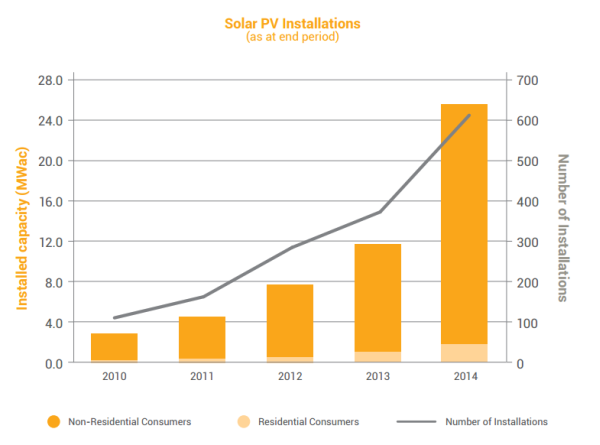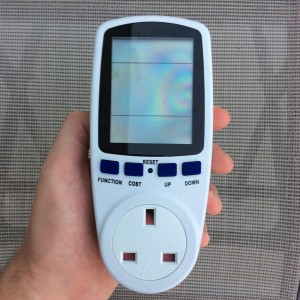Yesterday I set out to hunt some vampires in my house. Not the undead, blood sucking kind featuring long fangs and strange capes, but the energy sucking type. Let me explain!
After receiving a utilities bill that was higher than my low usual SGD 70 – 90 a month I set out to optimize my energy consumption.
Why saving power matters
Not only do I want to save money, but I am also concerned about my carbon footprint. After all Singapore’s energy is largely imported or produced by burning fossil fuels. Despite our island being so close to the equator our roof spaces are not yet fully used to create solar power and we do not have a significant share of renewables in our energy mix today.
Some interesting statistics from Singapore’s Energy Market Authority
- 9% of Singapore’s electricity is consumed by households, the rest is used by industry (42.6%) and Commerce/Services (36.5%) to cool all these shopping malls to freezy temperatures I guess!
- Singapore has a total production capacity of 12,889 MW
- 95% of Singapore’s electricity is generated by burning natural gas
- Solar power accounts for 0.2% of all electricity capacity in Singapore. Germany has a rate of 6.2% or 30 times as much despite the freezing, dark winters and autumns and its less favorable location far away from the equator
It is not all doom and gloom though, the good news is that the number of Singapore’s solar installations has been increasing:
(Source: EMA 2015)
Hunting some vampires
Curious about my energy consumption I bought this power meter off e-bay:
Plugged into an electrical socket it can automatically determine how much electricity is used by which device. This is especially useful when trying to find out how much applications on standby are sucking out of the net while we are not using them.
Like vampires they are silently sucking energy 24 hours a day.
What I measured in my house:
- My gaming PC is quite energy efficient: even under heavy load it rarely consumes more than 220 watts, even with speakers on. Buying an energy efficient gold rated power supply unit certainly helped
- Leaving my monitor and speakers on standby consumes about 8 watts – I will from now on switch these off when I am not using them
- Fans are quite energy efficient and only use about 40-50 watts depending on the fan speed
- Old lightbulbs definitely waste a lot of energy – about 40-60 watts as compared to LED lamps which use less than a quarter of energy to produce the same amount of light
- De-humidifiers are real energy suckers: my so called energy efficient Samsung dehumidifier consumes about 260 watts when actively de-humidifying vs around 60 watts while being on stand-by, just circulating the air
It is definitely possible to save quite a lot of energy when switching off sockets that are not in use, avoiding aircon and using fans instead and – this is a real no brainer – switching lights to efficient LEDs.
I can really recommend buying a cheap power meter (mine cost SGD 25 including shipping) to find out how much power your appliances really use.
How about you? How are you keeping energy costs low?


Thanks to your drive to hunt vampires I now know that only 0.2% of Singapore’s electricity is generated from solar. That’s quite embarrassing for a sun-soaked country like Singapore.
I was recently quite puzzled to learn that Germany has now the largest installed base of Photovoltaic Capacity in the world despite its rather unsuitable location in Northern Europe. This shows what is possible when a government puts focus on developing a certain innovative technology for 10+ years.
Singapore receives a yearly solar radiation that is about 50% higher than Germany’s. Still not ideal due to the high average cloud coverage.
Nevertheless I decided to plaster my roof with solar panels in order to reduce the carbon footprint of my family. The PV system is up and running for about 3 weeks and has produced already 500 KwH. That’s the supply side.
On the demand side I also measured the consumption of my main appliances. I believe a new maximum energy efficient fridge might bring the largest leverage to reduce the utility bill. Followed by modern split unit aircons and a LED-TV instead of those energy guzzling Plasma-TVs which were so in fashion 5 to 10 years ago.
500 KwH is quite a lot for just three weeks, congrats! I wish I had a roof too to plaster with solar panels, must feel great to pioneer this in Singapore. Is there any possibility to sell surplus energy back to the network or any government incentive? You should post some details on your blog (or have I missed it?). Would love to learn more!
Hi Singvestor,
Thanks to your encouragement I have just published a post titled “1 MwH of sunshine” on my blog.
Let me know what you think about solar in Singapore.